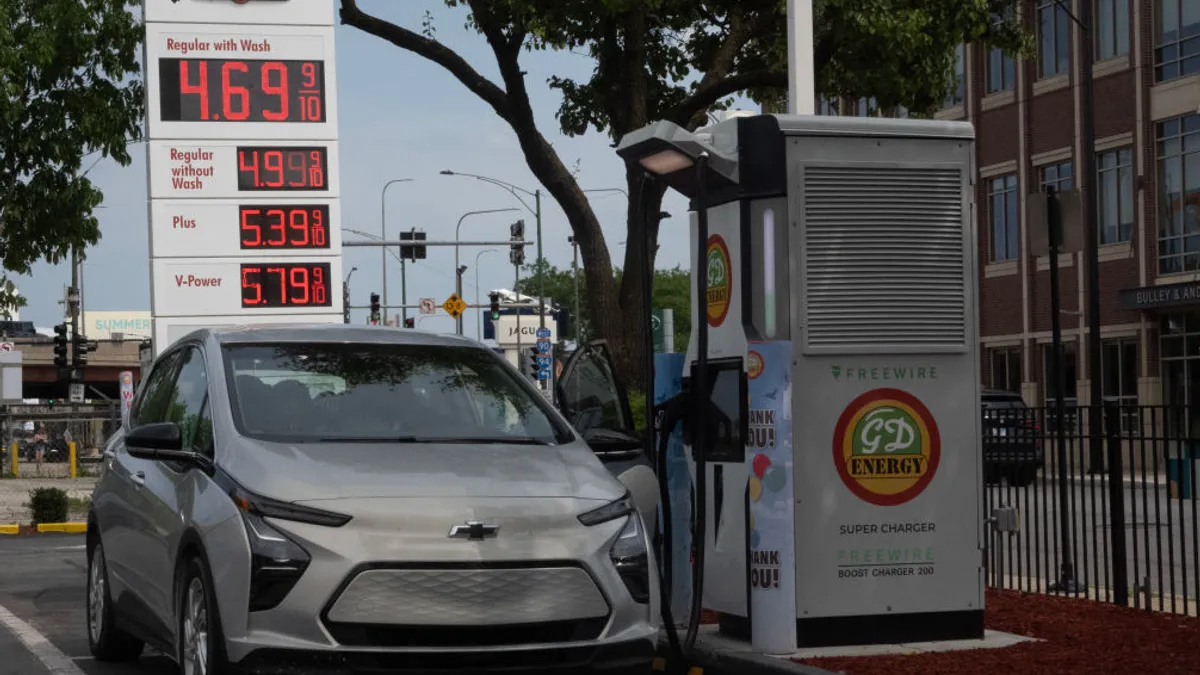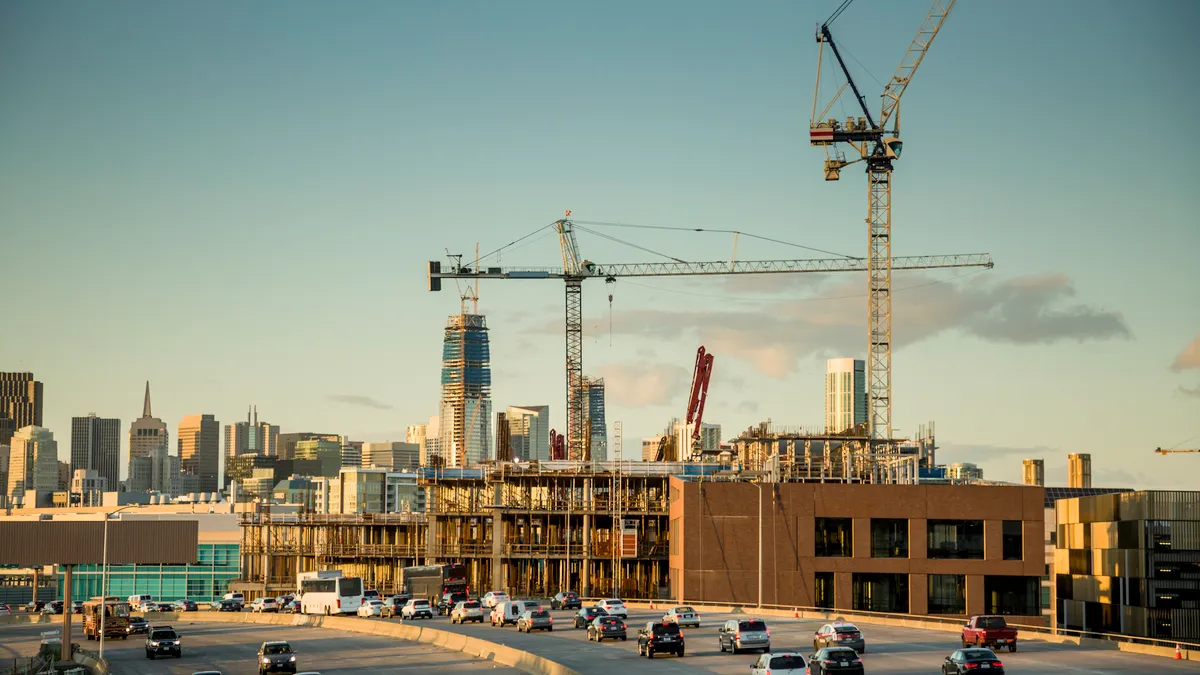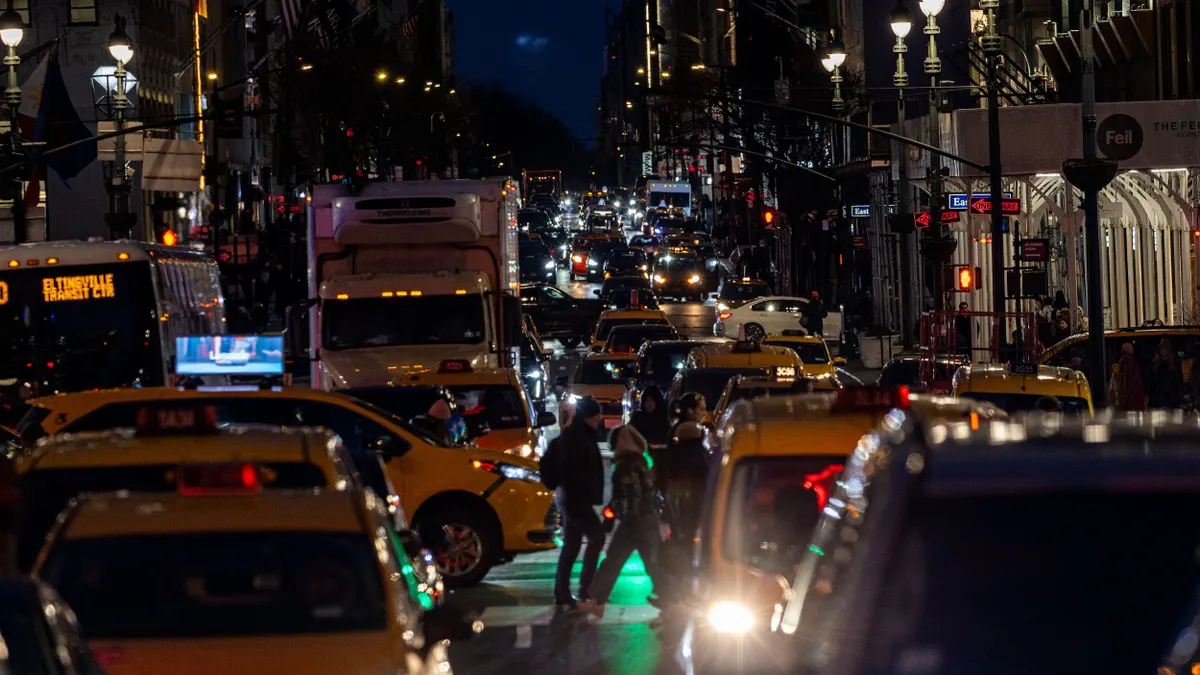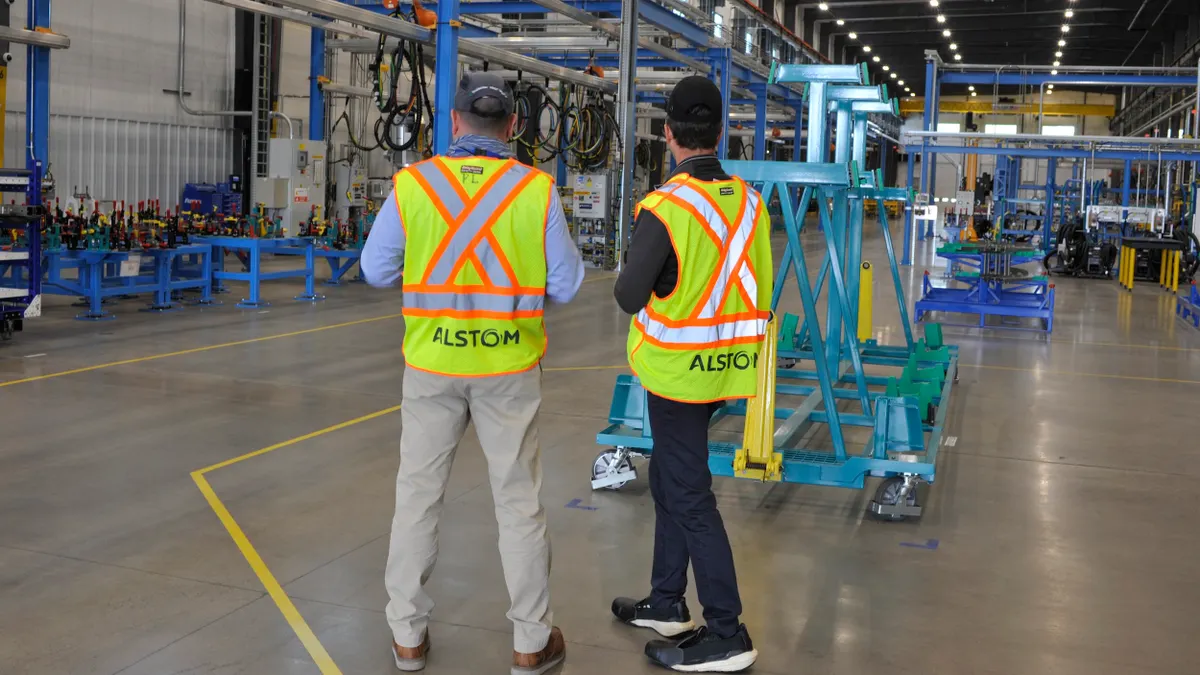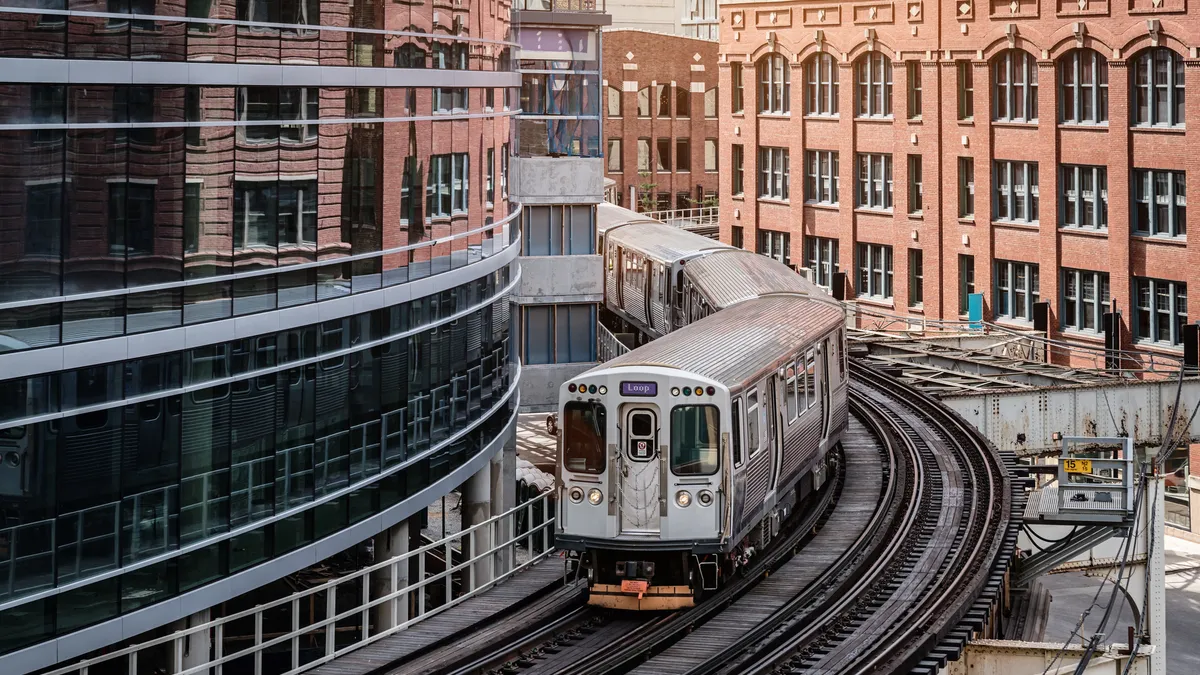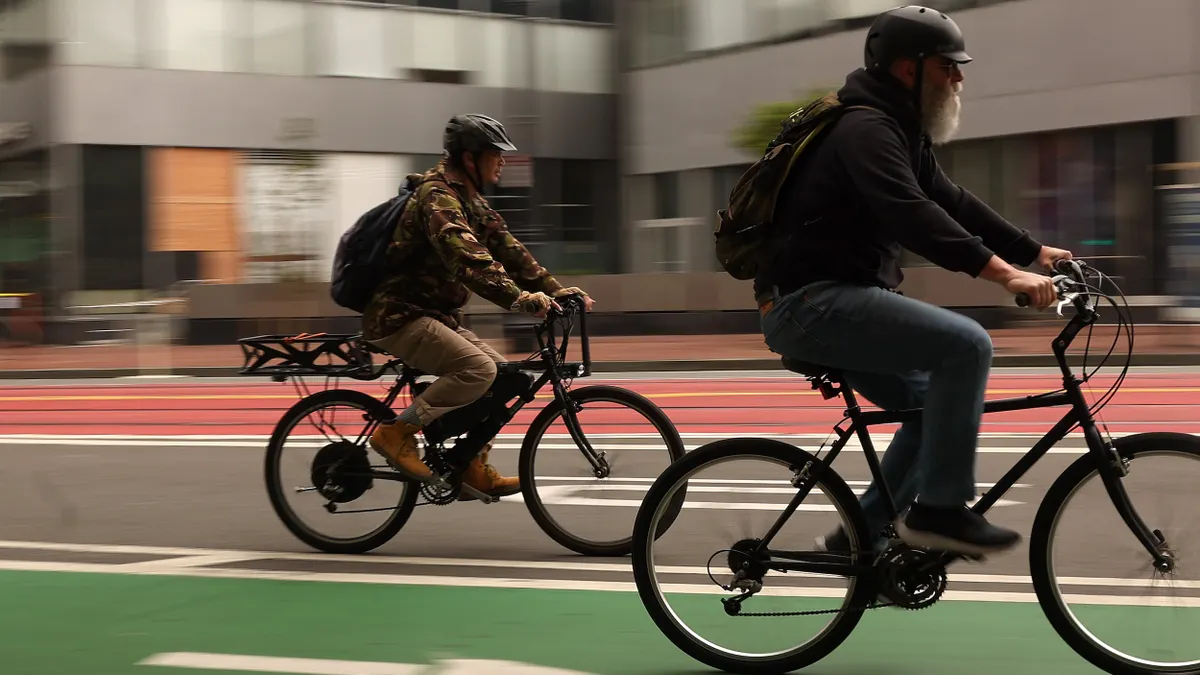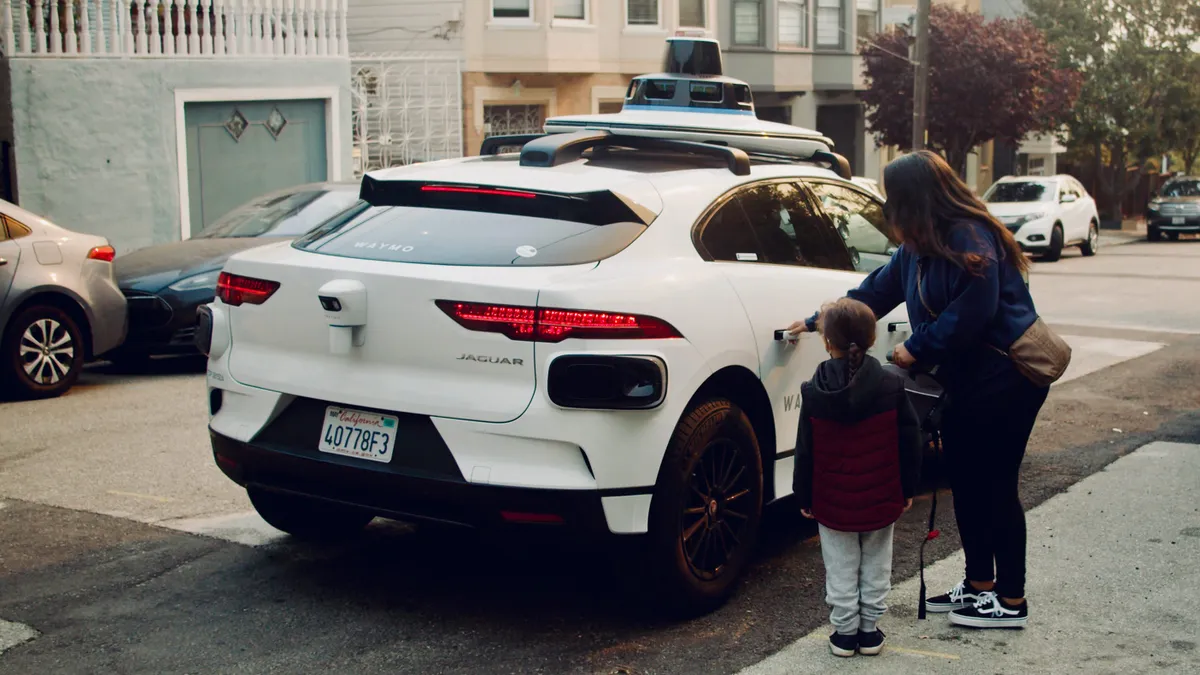Electric vehicle registrations in Chicago are steadily climbing. A new plan the Chicago Department of Transportation shared last week aims to build the infrastructure the city needs to keep up with the growth, reduce transportation-related emissions and make EV access more equitable.
The Chicago Moves Electric Framework is the city’s first such plan. It outlines initiatives that include a curbside charging pilot and expanded charging access in key areas throughout the city. CDOT is now seeking public feedback on the plan.
“Expanding access to EVs and charging infrastructure is a critical step toward delivering cleaner air, reducing emissions and improving quality of life across our city,” Chicago Mayor Brandon Johnson said in a statement.
The framework identifies near-term policy objectives such as streamlining the EV charger installation process for businesses and residents and implementing a “Low-Emission Zone” program in areas disproportionately impacted by air pollution by limiting or restricting medium- and heavy-duty vehicles during peak hours.
Neighborhoods on the south and west sides of Chicago see a disproportionate amount of air pollution, “largely due to transportation emissions,” CDOT says.
“Through this framework, we are setting clear goals and identifying solutions that reflect the voices of our residents, communities and regional partners,” CDOT Commissioner Tom Carney said in a statement. “By prioritizing equity and public input, we’re creating a roadmap for electric transportation that serves every neighborhood and helps drive down emissions across Chicago.”
Boosting charging site numbers, expanding locations
The number of registered battery-electric vehicles in Chicago, not counting plug-in hybrids, has grown from 1,865 in 2018 to 20,328 in 2024. However, the number of EV chargers has not kept pace. With 860 publicly available EV charging stations, Chicago has fewer chargers per EV than the ratio across the U.S., Illinois, or Cook County, according to CDOT.
EV sales in the state have also continued to grow, jumping more than 50% in the first quarter of 2025 compared with the same period last year, aided by incentives from the Illinois Environmental Protection Agency and ComEd, Crain’s Chicago Business reported.
Most of Chicago’s public charging stations are clustered downtown and in higher-income areas. Only 7.8% are in environmental justice neighborhoods, those that face higher environmental burdens.
“Too often, communities facing the greatest economic and transportation barriers also experience the most air pollution,” Johnson stated. “By prioritizing investments in historically underserved areas and making clean transportation options more affordable and accessible, we can improve both mobility and public health.”
CDOT analyzed equity gaps and mobility opportunities to prioritize placing EV chargers where transit options are limited or unavailable. It also examined population density and land use. Per its 2022 Climate Action Plan, Chicago has a goal of installing 2,500 public passenger EV charging stations by 2035. That plan also aims to electrify the city’s entire municipal fleet by 2035 and support the electrification of ride-hailing and taxi fleets by 2030.
In September 2024, Chicago was awarded $15 million in federal funding from the U.S. Transportation Department’s Federal Charging & Fueling Infrastructure program. The funding will go toward expanding public charging networks in high-traffic corridors, at transit hubs and in communities that “have historically not received the same level of infrastructure investment,” according to CDOT.
The project will include installation of Level 2 and fast-charging stations in public locations such as libraries and Chicago’s Midway Airport, “supporting not only personal EVs but also electric taxis, ride-hail and commercial fleets.”
The city will use funding from USDOT’s Congestion Mitigation and Air Quality Improvement Program to further support commercial fleet electrification projects. The city also pledged to continue seeking community input and new avenues for funding.
Curbside charging will be a “testbed”
CDOT’s curbside charging pilot program aims to reduce “barriers to EV ownership for residents who rely on street parking while encouraging broader EV adoption,” the plan states. The program will prioritize installation of EV chargers in high-density residential areas and serve as a “testbed” for public-private partnerships for deploying charging stations on the public right-of-way.
“Through collaboration with local utilities, private developers and EV companies, the city will pilot new technologies and funding models, assessing how best to scale charging infrastructure deployments efficiently and establishing formal CDOT permitting guidelines for such a program,” the plan states.
The plan also prioritizes enhancing the city’s e-bike and e-scooter infrastructure through targeted expansion of the city’s 1,000 Divvy stations. Cycling trips in the city increased 119% from 2019 to 2023, according to CDOT. The goal is to have four Divvy stations per square mile.
“By strategically increasing station density in areas like Gage Park, Brighton Park, Archer Heights, Dunning and East Garfield Park, the city will enhance mobility options for all residents, ensuring that every neighborhood benefits from a low-cost, connected transportation system,” the framework states.
The city introduced its Chicago Cycling Strategy in 2023 with a goal of enabling 70% of Chicago residents to live within half a mile of a “low-stress bikeway.”
Ryan Kushner is an editor of American City & County, which is also under Smart Cities Dive’s parent company, Informa TechTarget.


